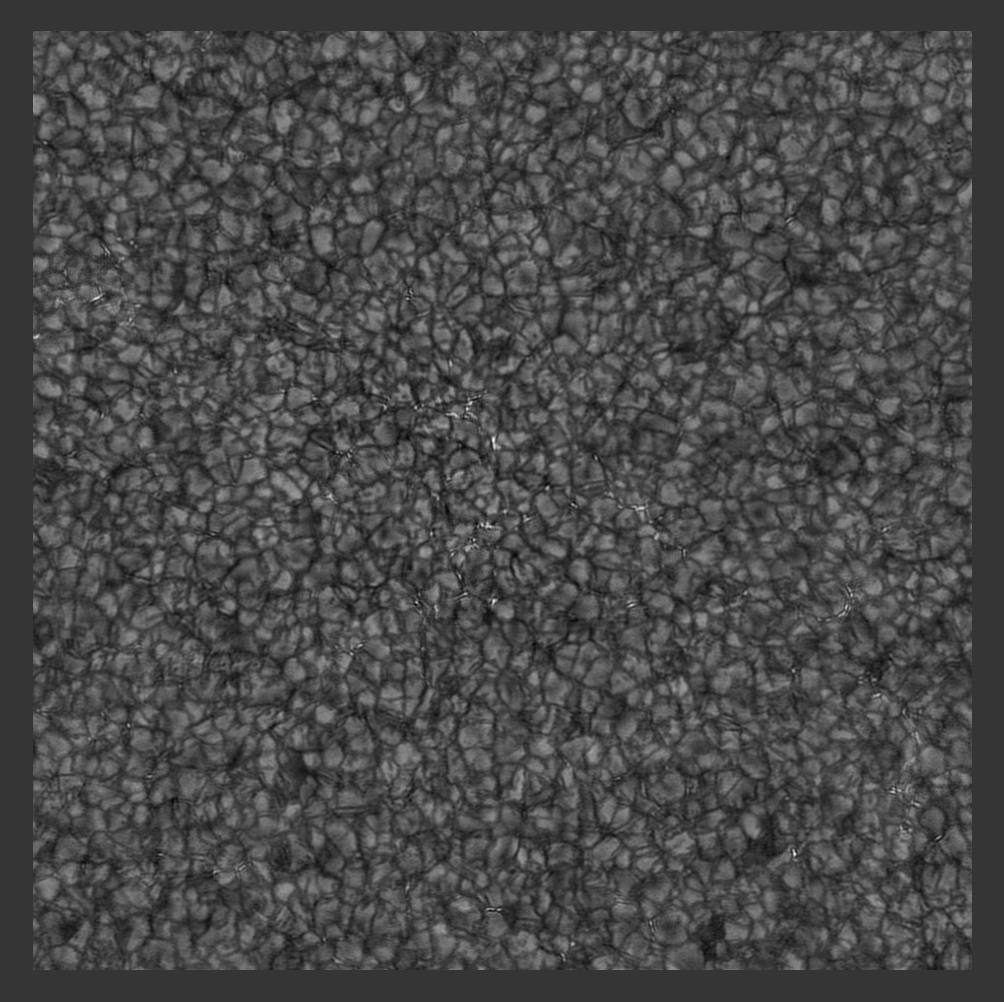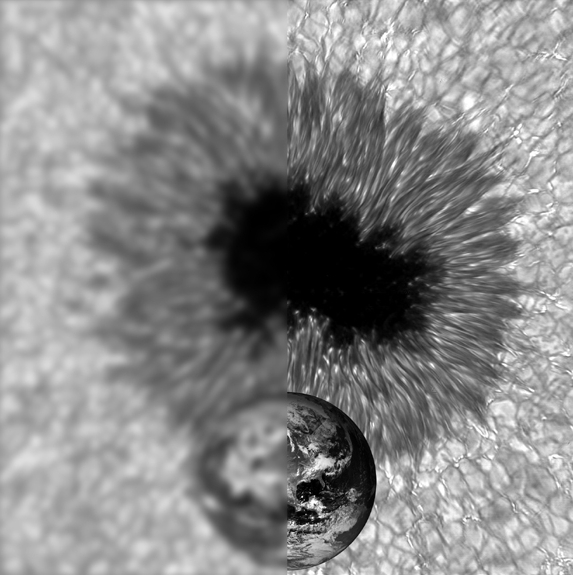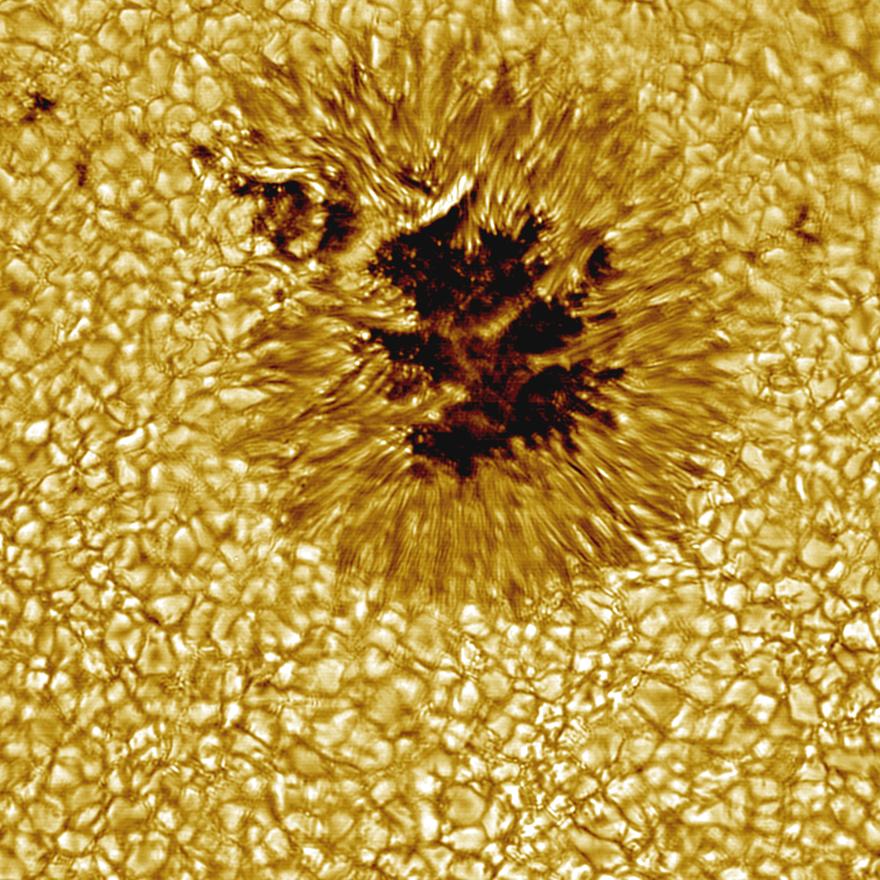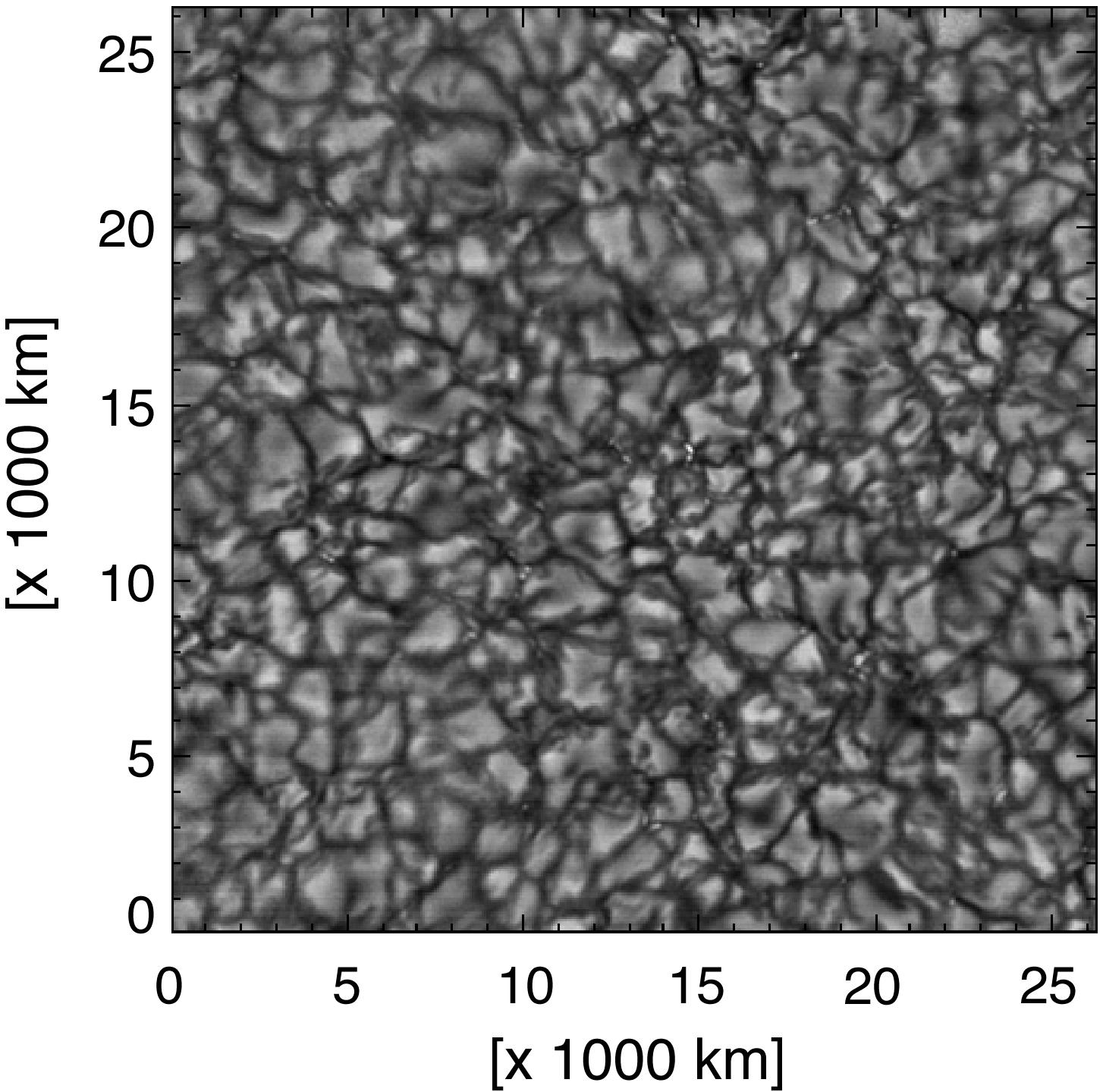Telescopes
Our Solar Telescopes

Granules on the Sun
Our Sun
Why Do We Study The Sun?
The Sun: the center of our solar system. It is a stable star that can affect climate on Earth and is powered by nuclear fusion (hydrogen into helium + energy) in its core. Ninety-three million miles away, the Sun's immense mass compresses and heats its core, while convection in the outer layers generates a powerful magnetic dynamo. Magnetic activity erupts through the visible surface causing spots, flares, mass ejections, and solar wind that all generate space weather. It is quite marvelous.
Solar research as a science grew out of a need to better understand the sun, our nearest star, and its effect on the Earth's atmosphere and interplanetary space. Among the stars, the sun is the only example accessible for detailed study, where we can see structures and processes that are unobservable in any other star. Thus solar astronomy also serves the study of stellar interiors and atmospheres.
The telescopes at Sunspot Solar Observatory are used to study the mysteries behind the mechanisms that drive and control solar magnetism and variability. Studying the Sun allows astronomers to better understand the effects its internal processes have on our planet. That is the reason why the U.S. Air Force sought out a place at Sacramento Peak to build solar telescopes: to study how the Sun affects life on Earth.
Today, we continue collecting significant data from the sun using the Richard B. Dunn Solar Telescope. That data continues to unveil surprising mysteries to scientists, like the impressive quantity of tornadoes on the Sun and the movement of matter during a solar flare.

Adaptive Optics
These correct atmospheric distortion caused by the turbulence of the Earth's atmosphere. To fully correct the image under poor seeing conditions, the development of a high-order AO system was initiated in 2001, demonstrated in 2003, and operational by 2004. The systems correct the image during periods of fair or good seeing to excellent seeing, greatly expanding the time available for fine-scale observing.
Learn more

Sunspots
Sunspots form on the surface of the Sun, which is known as the photosphere, meaning "sphere of light". These areas of extremely strong magnetic fields inhibit convection, making them significantly cooler than their surroundings, which is why they appear dark. Sunspots are so large that they stop the upflow of hot plasma. These structures can last from a few days to a few weeks. Fun fact: although we use the term "surface of the sun," the sun is not a solid mass— it's gas and plasma!

Granules
The photosphere, or the visible surface of the sun, consists of grain-like structures called granules. These are cells of somewhat hotter, brighter gas rising to the surface. In photos, they appear like pomegranate seeds. However, granules are approximately 500 miles (804 km) across and have a lifetime of approximately five minutes. The image shows a 25,000 km square region at the center of the disk. The Sun has a diameter of 1,400,000 km so this picture only covers >1% of the solar disk.